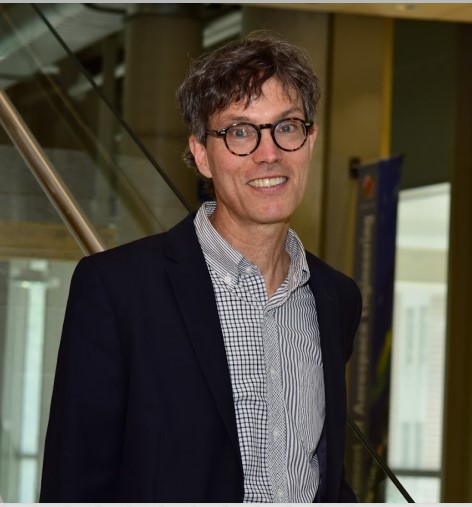News Story
Sunderland Receives NSF Award for Newly Discovered Class of Flame

Credit: Al Santos for UMD.
Peter Sunderland, a keystone professor and director of undergraduate studies in the University of Maryland (UMD) Department of Fire Protection Engineering (FPE), received a $360,000 award from the National Science Foundation (NSF) for his three-year research project on cool pool diffusion flames.
"Many of the engines that power land, air, and sea transportation burn hot, utilizing nonrenewable fuels,” said Sunderland. "Cool diffusion flames, which our team documented on the International Space Station last year, could contribute to a dramatic increase in fuel efficiency (39% - 60%) and, taking that a step further, bolster the use of renewable fuels." What’s more, these flames could also improve our understanding of the spread of wildland fires and smoldering.
Cool diffusion flames are unusual due to the low temperature at which they burn – between 500 and 1000 degrees K (i.e., 440 F to 1340 F) – compared to 2000 K for traditional flames. Their original discovery in 2012 has already resulted in an improved understanding of ignition; however, further progress in related research has been hindered due to the high cost and complexity of the required experimental facilities.
To that end, Sunderland seeks to reduce this cost by developing a novel facility that burns fuel pools in cool flames, and improve the understanding of cool diffusion flames by performing detailed measurements, comparing them to computational simulations. Many liquid fuels will be considered, including pure hydrocarbons, traditional transportation fuels, and renewable bio-derived fuels. It is unknown which of these fuels can burn in air as cool diffusion flames, and at what temperatures and mixture fractions. Another unknown is whether, or not, they can support warm diffusion flames, which burn at slightly hotter temperatures, and if these flames can exist without an external heat source.
Sunderland and his research team also aim to characterize flame temperatures, compositions, burning rates, and emissions. They will perform autoignition simulations with Cantera software, using various chemical kinetics models, and compare the predictions with the measurements.
Published June 27, 2023









